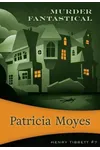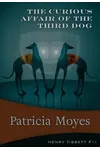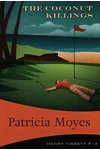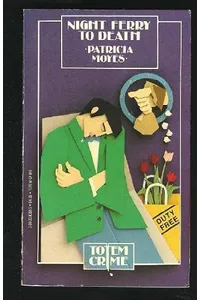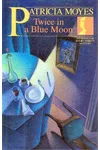Step into the charmingly suspenseful world of Inspector Henry Tibbett, where a mild-mannered Scotland Yard detective unravels mysteries with a knack for sniffing out crime! Patricia Moyes’ beloved series, spanning nineteen novels, blends classic British whodunits with international intrigue, all anchored by the delightful duo of Henry and his spirited wife, Emmy. Perfect for fans of Agatha Christie or cozy mysteries, this series offers clever puzzles and a touch of old-school charm.
From ski lodges in the Italian Alps to Caribbean islands buzzing with secrets, the Tibbett mysteries invite readers to solve crimes alongside a detective whose unassuming demeanor hides a razor-sharp mind. Ready to dive into a world of elegant sleuthing? Let’s explore the legacy of Inspector Henry Tibbett!
How Inspector Henry Tibbett Began
Patricia Moyes, born in Dublin in 1923, crafted the Inspector Henry Tibbett series after a colorful career that included working with Peter Ustinov and translating plays for Broadway. Inspired by the Golden Age of detective fiction—think Christie and Sayers—Moyes introduced Henry Tibbett in 1959 with Dead Men Don’t Ski. Her goal? To revive the ‘who’ in whodunits, focusing on clever solutions over gritty crime scenes. Moyes’ knack for vivid settings and sharp dialogue, honed during her time at Vogue, gave the series its distinctive flair.
The Heart of Inspector Henry Tibbett
The series kicks off with Dead Men Don’t Ski (1959), where Henry and Emmy vacation in the Italian Alps, only to stumble upon a smuggling ring and a murder. In Murder Fantastical (1967), Henry investigates a shooting in an eccentric English village, unraveling family secrets with his trademark intuition. Who Saw Her Die? (1970), nominated for an Edgar Award, sees Henry probing a suspicious death at a lavish birthday party. Later, Black Widower (1975) takes the Tibbetts to a Caribbean embassy, where a diplomat’s wife meets a grim fate.
Moyes’ mysteries blend cozy English village vibes with exotic locales like Switzerland, Holland, and the Caribbean. Themes of loyalty, deception, and social commentary—often tied to post-war or post-colonial settings—run deep. Henry’s “nose” for crime, paired with Emmy’s practical wit, creates a dynamic partnership that elevates each case. The series’ traditional style, with clues laid out for readers to follow, evokes the Golden Age while feeling fresh thanks to Moyes’ worldly perspective.
Unlike modern thrillers, the Tibbett novels prioritize character and atmosphere over violence. From quirky villagers to scheming diplomats, Moyes populates her stories with memorable figures, making each book a delightful puzzle wrapped in vivid settings.
Why Inspector Henry Tibbett Resonates
The Inspector Henry Tibbett series carved a niche in the mystery genre by blending timeless detective work with a global twist. Fans praise its elegant plotting and the Tibbetts’ relatable chemistry, which grounds even the wildest cases. Moyes’ ability to weave social issues—like political corruption or class divides—into her stories adds depth, earning her a spot in the Detection Club and a loyal following. Though less known today, the series remains a gem for cozy mystery lovers, with reprints keeping it accessible.
Its influence lingers in the enduring appeal of character-driven mysteries. Readers on platforms like Goodreads celebrate the series’ charm, often citing Henry and Emmy as a standout detective duo. Moyes’ legacy as a bridge between Golden Age classics and modern cozies ensures her work endures.
- First Book: Dead Men Don’t Ski (1959)
- Last Book: Twice in a Blue Moon (1993)
- Total Books: 19
- Award: Who Saw Her Die? nominated for an Edgar Award (1971)
Grab Dead Men Don’t Ski and dive into Inspector Henry Tibbett’s world of clever clues and cozy mysteries! Whether you’re a seasoned sleuth or new to the genre, Henry and Emmy’s adventures promise a delightful escape.






